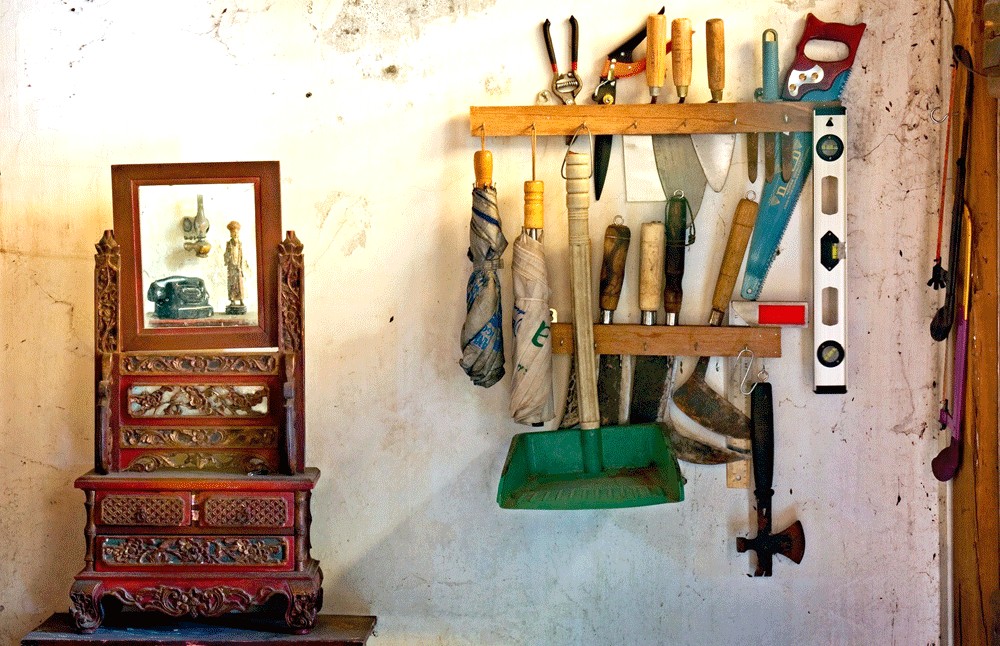Exhibition celebrates Indonesia's ethnic diversity
An ongoing exhibition celebrates Indonesia’s ethnic diversity, particularly the way Chinese culture has become imbued in the daily lives of Indonesians.
Change Size
 Colorful: From decorations to everyday practical objects, Chinese culture has imbued itself in the daily life of many Indonesians. (Courtesy of Edial Rusli/-)
Colorful: From decorations to everyday practical objects, Chinese culture has imbued itself in the daily life of many Indonesians. (Courtesy of Edial Rusli/-)
A
n exhibition titled “Home 7+1 Chinese Culture”, aims to show how Chinese culture — just like other Indonesian ethnic roots — exists in most Indonesians’ daily lives, so much so that it doesn’t seem obvious anymore.
Photographer Shamow’el Rama Surya heads the exhibition, held by Salatiga’s Lighthouse Photo Institute until Sept. 28 at the 1915 Arts Koffie Huis in Salatiga, Central Java, along with seven fellow photographers: Aris Liem, Seno Resta, Mohammad Reza Gemi Omandi, Edial Rusli, Mas Aslam Muhammad Aslam, Ully Zoelkarnain and Edward Nugroho.
The photos showcase details of homes around Salatiga and are the photographers’ own houses, which are permeated with styles and decorations that are rooted in Chinese traditions and arts.
”Diversity in Indonesia — which we call Nusantara — is an unavoidable fact,” notes event curator Argus FS, who said the event aimed to stand as a unique photo project that could represent a “voice for humanity, diversity, antipolitical purposes, equality and peace in Nusantara”.
As to showcase how much the exhibition is a project of passion, the photographers all pitched in their own money to make sure the event went ahead.
The seeds of the exhibition were planted when the Jakarta gubernatorial election was held last year, which the photographers saw evoked a lot of racial sentiments that they felt did not represent how the majority of Indonesians felt.
At that time, they all saw glimpses of the anti-Chinese perception that led to the 1998 anti-Chinese riots and felt like they had something to say regarding it.
Shamow’el, who had the initial idea for the show, then contacted some of his colleagues — all from a variety of different religious and ethnic backgrounds — who had been participants in the photography workshops he has held in the past.
The open invitation he sent was answered by only seven photographers.
“We all wanted to show how Chinese culture has been accepted as part of the daily life of Indonesian families. This can be seen through the presence of [Chinese-rooted] household objects in people’s houses, such as Chinese jars and vases, paintings and other decorations,” he says.
“We all love Bhinneka Tunggal Ika [unity in diversity] and that it represents people of many different backgrounds in Indonesia.”
Of the seven, Shamow’el said only two photographers who are of Chinese descent wanted to participate, but they initially felt some trepidation in exposing their Chinese roots front-and-center.
He managed to persuade them by telling them how valuable and important it was to “stand up for their identity and Chinese culture”.
On the contrary, Shamow’el said the photographers who did not come from a Chinese background were eager to take part.
The technical approach the photographers used was done to make sure the photos looked and felt natural. As such, they avoided using too much additional lighting — the kind that would be used in home décor publications — and focused on capturing the homes’ natural ambience and atmosphere.
“We wanted it to look natural and as such did it like we were doing documentary photography,” Shamow’el says.
The photos also show how embedded Chinese traditions are in Indonesian households, which may not be obvious to many.
“We are living in a contemporary time, so not all things come from the past — it has grown,” explained Shamow’el. Some decorations may not even announce their Chinese-roots, having already become rooted in Indonesian tradition.
The photographers also made sure they observed everything in detail because, Shamow’el says, “Chinese culture is complex, with many aspects of philosophy and beliefs. Some aspects are still pure in their presentation and many aspects have been mixed and blended in our daily lives”.
The hope is that those who view the photos will come away with a clearer understanding of the deep relationship between Chinese and Indonesian culture.
For viewers with a Chinese-Indonesian background, Shamow’el hopes they come to appreciate their own heritage and identity “as members of a big nation, the multi-cultured Indonesia”.
___________
For further details, please check sramasurya.com









